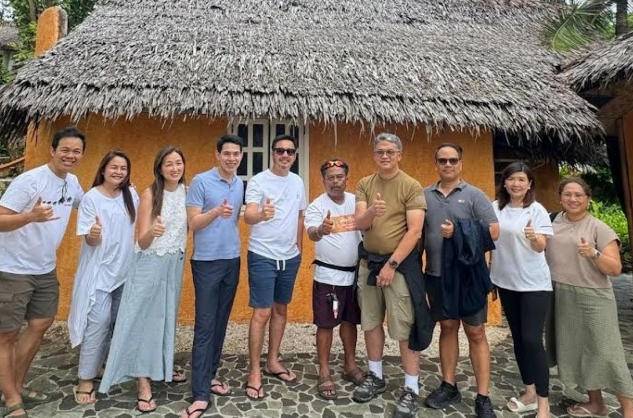
 i_need_contribute
i_need_contribute

HEALING AS ONE Noel Torremocha (sixth from the left) with EO Philippines South.
Siquijor keeps pulling me back. This was my second visit to the island, and it still holds the same quiet magic. As a physician with a background in alternative and traditional medicine, I’ve always been drawn to healing practices that blend the old and the new. Four days ago, sitting with Noel Torremocha in a private spot overlooking the sea, I found myself in familiar territory—that space where ancient wisdom and modern wellness meet. My training in both worlds helped me understand what Noel was really saying about his family’s work.
This wasn’t a tourist stop. We met away from the crowds, not at the famous Balay Pahauli, where his family treats patients in Barangay Cantabon. That place is for the work itself. We needed somewhere to just talk. Over coffee and mango shakes, Noel told me how his family’s healing practice actually works—and why it matters beyond the tourist stories.
“Our power comes from the Lord,” Noel said early on. I realized then this isn’t about mysticism or theater. It’s faith-based work, handed down through generations with prayer at the core. When I asked how he figures out what someone needs, he said, “We feel the pulse.” That stopped me. As a doctor, I do the same thing—feel for rhythm, for what’s off. We’re both reading the body’s signals, just in different languages. Same starting point, different vocabulary.
Noel’s wife, Juanita, 64, learned from her father, Pedro “Endoy” Tumapon, one of Siquijor’s known healers. When Endoy died in 2007, Juanita didn’t want to continue. Then she got sick—inexplicably. Local belief says refusing a healer’s calling brings trouble. Once she started healing others, her health came back. Noel trained under Endoy too, spending years hiking mountains to gather herbs and learning the orasyon—prayers—that go with each plant.
Because time was tight during my visit, my family and I experienced the healing rituals with another healer. First was tuob—we sat on chairs while medicinal leaves and coconut husks burned in clay pots underneath. A blanket draped over us trapped the warm, aromatic smoke. We breathed it in, let it surround us. Then came bolo-bolo, where the healer murmured prayers over water mixed with stones and oils, gently applying it to our skin. Both rituals felt calming, intentional. The healer’s hands moved with certainty.
What interests me is how the Torremochas handle limits. They don’t claim to fix everything. Infections, anything needing tests or surgery—they send people to doctors in nearby towns. “We’re healers, not magicians,” Noel said. “We work alongside modern medicine.” They charge nothing. Just a donation box, and many pay nothing at all. “We don’t ask for money,” Noel told me. This is calling, not business.
But here’s what really got me: Their impact goes beyond human health. Every Holy Week, Noel does pangalap—gathering medicinal plants. For seven Fridays during Lent, he and other healers hike Mt. Bandilaan at dawn, collecting sambong, lagundi, and other herbs. They take only small clippings, never whole plants. They pray before each cut. No harvesting during full moons, to let the forest recover. “If we took everything, it would die,” Noel said. This practice has kept Siquijor’s forests healthy. The mountain is what Noel calls a “living pharmacy,” and healers protect it. The Cantabon Healers’ Association now works with government programs, planting hundreds of medicinal trees.
Tourism complicates things. More visitors want “authentic” healing experiences. The Torremochas welcome respectful guests, but they’re careful. No photos without permission. Consent matters. Dignity matters. Noel mentioned his frustration with vlogs that sensationalize their work as witchcraft. “That harms everyone,” he said.
Walking away that afternoon, I felt different. The Torremochas showed me that healing also happens through presence, prayer, and respect for nature. They’re not competing with what I do as a physician. They’re filling spaces modern medicine can’t always reach. When Noel checked my pulse during our talk, he noted, “Kulang ka sa tulog”—you need more sleep. He was right. I hadn’t mentioned my insomnia.
Siquijor’s real magic isn’t in spells or potions. It’s people like Noel and Juanita who understand that health means caring for body, spirit, and environment together. For those of us who practice medicine in clinics and hospitals, their lesson is simple: Sometimes the best medicine is remembering we’re part of something bigger. And learning, again, to listen.